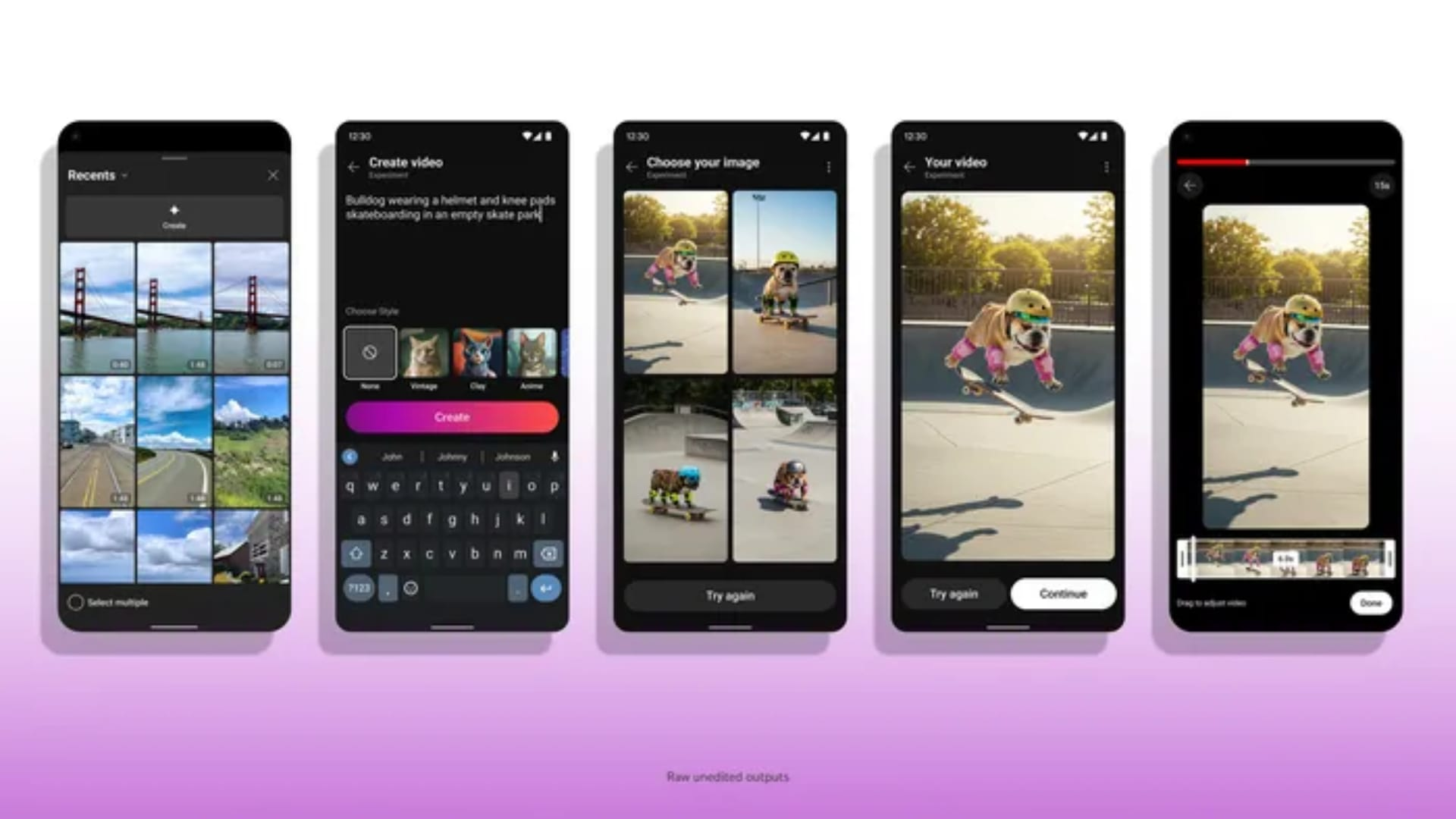Look out, AI video could soon flood YouTube Shorts
Be skeptical of any giant Pomeranians you see on your screen.

There are some unbelievably great, if abbreviated, films to watch on YouTube Shorts. A lot of them may soon be more literally unbelievable thanks to Google's AI video creation model Veo 2. YouTube has released Veo 2 to the Shorts platform, augmenting YouTube's Dream Screen AI tool and letting you produce AI-fueled flicks based on a text prompt.
Dream Screen has been using the original version of Veo to produce video backgrounds out of text prompts for Shorts since last year. Veo 2 ups the ante significantly by also making the characters and objects for the video along with the background. The upgrade also makes Dream Screen faster, better at understanding text prompts, and able to produce much more realistic results. The videos mimic real-world physics, and the characters move as realistically (or cartoonishly) as you might want.
You can try out the enhanced Dream Screen by opening the Shorts camera, selecting Green Screen, and typing in what you want to see. You can even add an AI-generated clip to an existing Short by tapping "Add," then "Create," then typing up the prompt. Veo 2 takes over, and within seconds, your giant Pomeranian ballerina is ready to perform.

AI visions
The upgrade to Dream Screen raises many questions and possible concerns. Will AI-generated content flood YouTube Shorts, making it harder to tell what’s real and what’s not? What will creativity look like when the barriers to high-quality visuals disappear? Will we simply get stuck in a loop of AI-generated influencers making AI-generated content for an audience of AI-powered recommendation algorithms?
Google does seem to get that hyper-realistic AI videos made in a few seconds might have some potential pitfalls. That's why YouTube is attaching a SynthID watermark and a label indicating the AI origins of any Dream Screen-produced video. How well these transparency and tracking attempts perform remains to be seen, but at least there's something.
The new feature is only coming to the U.S., Canada, Australia, and New Zealand for now, but others are in the pipeline, with more countries on the way. If you’re a YouTube content creator, this may be a huge boon, especially if the only thing standing between your video and viral fame is a slightly more perfect shot, better stock footage, or something truly outlandish. If you don't have an idea, you can always toss around ideas with YouTube's Brainstorm with Gemini tool.
You might also like
- You can start asking AI for your next YouTube video idea
- Investigation finds companies are training AI models with YouTube content without permission
- YouTube will now take down AI deepfakes of you if you ask
Get daily insight, inspiration and deals in your inbox
Sign up for breaking news, reviews, opinion, top tech deals, and more.

Eric Hal Schwartz is a freelance writer for TechRadar with more than 15 years of experience covering the intersection of the world and technology. For the last five years, he served as head writer for Voicebot.ai and was on the leading edge of reporting on generative AI and large language models. He's since become an expert on the products of generative AI models, such as OpenAI’s ChatGPT, Anthropic’s Claude, Google Gemini, and every other synthetic media tool. His experience runs the gamut of media, including print, digital, broadcast, and live events. Now, he's continuing to tell the stories people want and need to hear about the rapidly evolving AI space and its impact on their lives. Eric is based in New York City.
You must confirm your public display name before commenting
Please logout and then login again, you will then be prompted to enter your display name.
